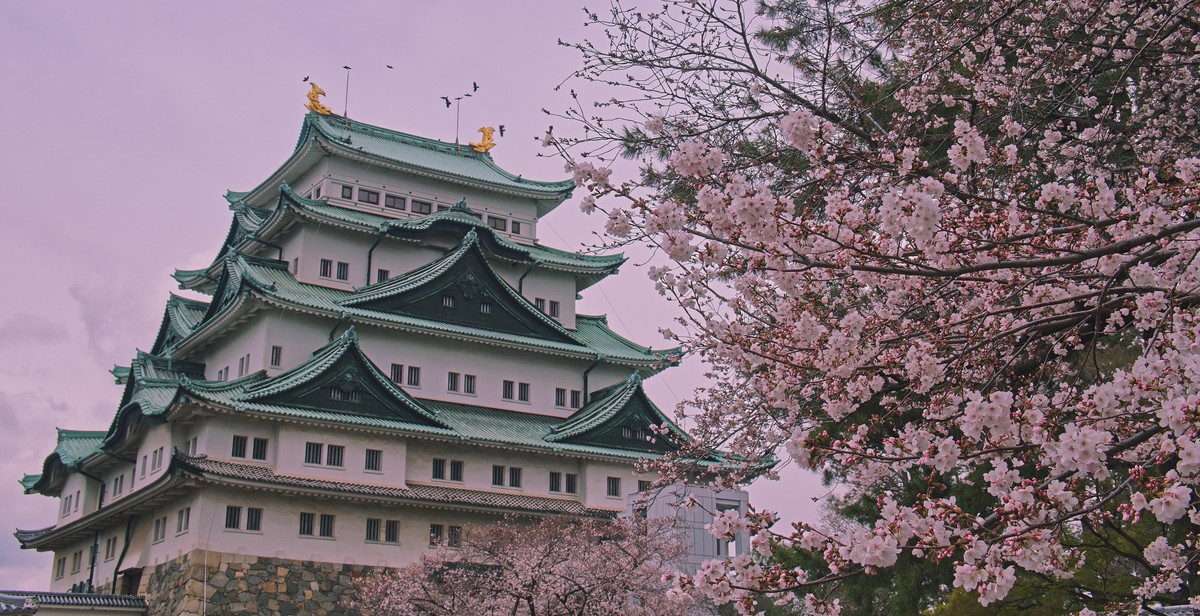Introduction to Zen Architecture
Zen architecture is a design philosophy that aims to create tranquil and harmonious living spaces. It is a way of life that originated in Japan and has since been adopted by many people around the world. The concept of Zen architecture is based on the principles of simplicity, minimalism, and naturalness. This approach to architecture has gained popularity because of its ability to create spaces that promote relaxation and calmness.
What is Zen Architecture?
Zen architecture is a design philosophy that emphasizes simplicity, minimalism, and naturalness. It is a way of life that aims to create spaces that promote relaxation and calmness. The concept of Zen architecture is based on the principles of Zen Buddhism, which emphasizes the importance of mindfulness, meditation, and simplicity. In Zen architecture, spaces are designed to be minimalistic, with a focus on natural materials and colors. The goal is to create spaces that are calming and peaceful, allowing people to feel more relaxed and at ease.
Why Choose Zen Architecture?
There are many reasons why people choose Zen architecture. One of the main reasons is that it promotes relaxation and calmness. This is especially important in today’s fast-paced world, where people are constantly on the go and under a lot of stress. Zen architecture provides a way to create a peaceful and calming environment that can help people feel more relaxed and at ease.
- Another reason why people choose Zen architecture is that it is minimalistic and simple. This means that it is easy to maintain and keep clean, which is important for people who have busy lives.
- Additionally, Zen architecture is often associated with nature, which can help people feel more connected to the natural world. This can be especially important for people who live in urban areas and don’t have a lot of access to nature.
- Finally, Zen architecture is often considered to be aesthetically pleasing. Its simple and natural design can create a beautiful and elegant space that is both calming and visually appealing.
Overall, Zen architecture is a design philosophy that has gained popularity because of its ability to create spaces that promote relaxation, calmness, and connection to nature. Its minimalistic and natural design can also create a beautiful and aesthetically pleasing space that is easy to maintain and keep clean. If you’re looking to create a tranquil and harmonious living space, Zen architecture may be the perfect design philosophy for you.

Principles of Zen Architecture
Zen architecture is a style that emphasizes tranquility, simplicity, and harmony. It is a design philosophy that seeks to create spaces that promote peace and calmness. The following are the principles of Zen architecture that can be applied to create tranquil and harmonious living spaces.
Simplicity
The first principle of Zen architecture is simplicity. This principle focuses on creating a space that is free of clutter, unnecessary decorations, and distractions. Zen architecture favors clean lines, neutral colors, and minimal ornamentation. A simple design encourages a clear and focused mind, which is essential for creating a peaceful and harmonious environment.
Natural Materials
Zen architecture emphasizes the use of natural materials such as wood, stone, and bamboo. These materials are not only beautiful but also have a calming effect on the mind and body. Natural materials also create a connection between the living space and the natural world, promoting a sense of harmony and balance.
Minimalism
Minimalism is another essential principle of Zen architecture. This principle focuses on creating a space that is functional and free of unnecessary items. Minimalism encourages the use of only essential items, which promotes a sense of calmness and clarity.
Functionality
Functionality is a crucial principle of Zen architecture. This principle focuses on creating a living space that is practical and efficient. The design should be tailored to the needs of the inhabitants, providing them with a comfortable and functional living space. A functional design promotes a sense of ease and relaxation, which is essential for creating a harmonious environment.
| Principles of Zen Architecture | Description |
|---|---|
| Simplicity | Create a space that is free of clutter and distractions. |
| Natural Materials | Use natural materials such as wood, stone, and bamboo. |
| Minimalism | Use only essential items to promote a sense of calmness and clarity. |
| Functionality | Design a living space that is practical and efficient. |

Designing a Zen Home
Designing a Zen home involves creating a space that promotes tranquility, harmony, and balance. The following are key elements to consider when designing a Zen-inspired living space:
Color Palette
The color palette for a Zen home should be simple and muted. Neutral colors like beige, gray, white, and black are commonly used. These colors evoke a sense of calmness and help create a serene atmosphere. Accents of natural colors like green, brown, and blue can also be used to add depth and texture.
Furniture and Decor
When choosing furniture and decor for a Zen home, less is always more. The focus should be on simplicity and functionality. Choose furniture that is low to the ground and has clean lines. Natural materials like wood, bamboo, and stone are commonly used in Zen-inspired design. Decor should be minimal and carefully curated. A few carefully chosen pieces of art, pottery, or sculpture can add interest without cluttering the space.
Lighting
Lighting is an essential element in creating a Zen-inspired living space. Natural light is preferred, but soft, warm lighting can also be used to create a relaxing atmosphere. Avoid harsh overhead lighting and opt for soft, diffused lighting instead. Paper lanterns, floor lamps, and table lamps are all great options for creating a warm and inviting atmosphere.
Indoor Plants
Plants are an important part of Zen-inspired design. They bring life and energy into the space and help create a connection to nature. Choose plants that are easy to care for and that thrive in low-light conditions. Bamboo, ferns, and succulents are all great options. Use planters made of natural materials like clay or bamboo to enhance the Zen aesthetic.
| Key Points |
|---|
| • Choose a simple and muted color palette |
| • Select furniture and decor that is minimal and functional |
| • Use soft, warm lighting to create a relaxing atmosphere |
| • Incorporate indoor plants to bring life and energy into the space |

Creating Tranquility
One of the main goals of Zen architecture is to create a sense of tranquility and harmony within living spaces. This can be achieved by incorporating various elements that promote relaxation and peace of mind. Here are three key ways to create a tranquil and harmonious living space:
Incorporating Water Elements
Water is a fundamental element in Zen philosophy, representing life, purity, and clarity. Incorporating water elements into your living space can create a calming and peaceful atmosphere. This can be achieved through the use of fountains, ponds, or even indoor water features. The sound of water can also be soothing and help to block out unwanted noises.
Integrating Nature
Zen architecture emphasizes the importance of connecting with nature. Integrating natural elements such as plants, rocks, and wood can create a sense of balance and harmony within your living space. Plants not only add a touch of greenery but also purify the air and provide a calming effect. Rocks, on the other hand, can be used to create a natural focal point and add texture to your living space. Wood, whether it be in the form of furniture or flooring, adds warmth and a natural feel to any room.
Soundscaping
Soundscaping is the art of using sound to create a desired atmosphere. In Zen architecture, soundscaping can be used to create a peaceful and tranquil environment. This can be achieved through the use of wind chimes, singing bowls, or even white noise machines. These sounds can help to drown out unwanted noise and create a calming atmosphere.
By incorporating water elements, integrating nature, and soundscaping, you can create a tranquil and harmonious living space that promotes relaxation and peace of mind.

Harmonious Living Spaces
Creating a Zen-inspired living space is all about achieving a sense of balance and harmony. This can be achieved in a number of ways, from incorporating natural materials to creating an open floor plan. Here are some tips for designing a harmonious living space:
Open Floor Plan
An open floor plan is a hallmark of Zen architecture. It creates a sense of flow and openness that encourages relaxation and tranquility. By removing walls and barriers, you create a space that feels expansive and free. This can be achieved by combining your living, dining, and kitchen areas into one large, open space.
Balance and Symmetry
Balance and symmetry are key elements of Zen architecture. This means creating a sense of equilibrium in your space by using equal proportions and shapes. For example, you might use a symmetrical layout for your furniture or incorporate matching decor elements throughout the space. This creates a calming and harmonious atmosphere that promotes relaxation and peace.
Feng Shui
Feng Shui is an ancient Chinese practice that focuses on the flow of energy, or chi, in a space. By incorporating Feng Shui principles into your design, you can create a more harmonious and balanced living space. This might include using natural materials, such as wood or stone, incorporating plants, or aligning furniture to face the entrance of the room.
By following these tips, you can create a Zen-inspired living space that promotes relaxation, tranquility, and harmony.
Conclusion
Designing a Zen-inspired architecture is all about creating tranquil and harmonious living spaces that promote relaxation and inner peace. By incorporating natural materials, minimalist design, and a focus on simplicity, you can create a space that feels calm and serene.
Key Takeaways
- Choose natural materials like wood, stone, and bamboo to create a connection with nature.
- Use a minimalist design approach to create a clean and uncluttered space.
- Focus on simplicity and remove anything unnecessary from the space.
- Create spaces that promote relaxation and inner peace, such as meditation rooms or outdoor areas.
Benefits of Zen-Inspired Architecture
Not only does Zen-inspired architecture create a peaceful and calming environment, but it also has many other benefits:
| Benefit | Description |
|---|---|
| Reduced stress | A Zen-inspired space can help reduce stress and anxiety levels. |
| Better sleep | A calming environment can help promote better sleep. |
| Improved focus | A minimalist design can help improve focus and concentration. |
| Increased creativity | A peaceful environment can help increase creativity and inspiration. |
Overall, designing a Zen-inspired architecture can have a positive impact on your physical, mental, and emotional well-being. By incorporating these principles into your living space, you can create a sanctuary that promotes tranquility and harmony.
